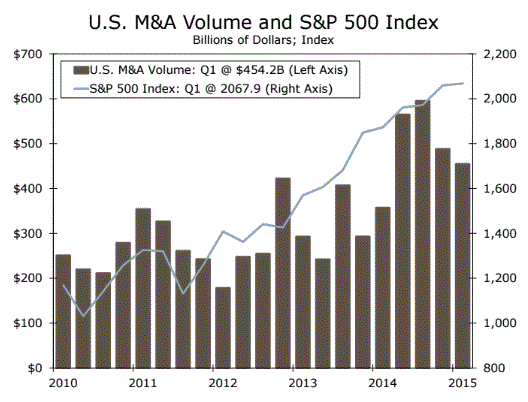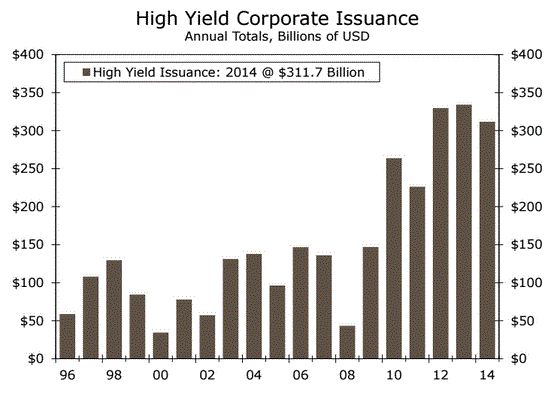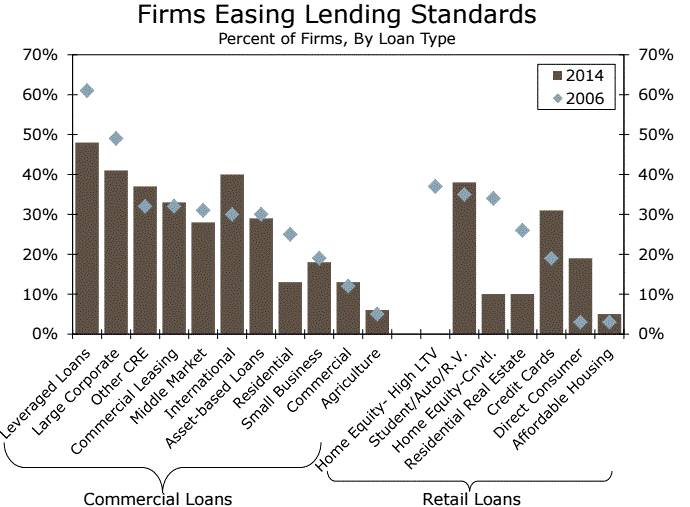Blog

Why The Fed Shouldn't Wait to Raise Rates -Wells Fargo
There arernrisks involved in doing nothing two economists contend, referring to thernFederal Reserve’s signal at its March Open Market Committee (FOMC) meeting thatrnit would further delay the first fed funds rate increase. Markets now anticipate that the hike will be inrnSeptember rather than June, a timeline with which Wells Fargo Bank economists JohnrnE. Silvia and Michael A. Brown do not agree. rnIn a special commentary the two said they find “the delay in Fed action concerning given the incentive effects ofrnsearching for higher yield and, in turn, the willingness of market actors to takernon additional risk when interest rate expectations are flat.” They argue thatrnthe Fed is behind the curve in lifting the short-term fed funds rate. </p
They content there are already signs ofrnrisk-taking behavior arising, at least in part from the easy monetary policyrnthat has kept rates exceptionally low for so long. Increased risk-taking is a by-product ofrninvestors seeking higher yields and this is already playing out with largernrun-ups in high yield debt issuance and greater subprime lending, especially inrnthe auto market. The two maintain that the longer the Fedrnwaits, the greater the risk that these credit sectors become overheated andrnresult in adverse economic effects.</p
They point to the recent past, when thernFed moved to counter the effects of the dot-com bust in 2001 by cutting the fedrnfunds target rate, eventually to 1 percent, and leaving low rates in placernuntil June 2003 – some 18 months after the end of what was an 8-month long 2001rnrecession. The result was an increase inrnrisk-taking as investors looked for a higher yield, a demand that help supportrnthe appetite for subprime home mortgages, collateralized debt obligations, andrnother risky investments. The greater riskrnappetite also helped fuel a rapid growth in new home mortgages and asset pricerninflation, especially home values. And we know what happened then.</p
So, they ask, are we about to repeat thernsame mistakes? They appear to think so although this time the risk taking mayrnbe focused on areas other than housing. rnThere is a rapid rise in mergers and acquisitions (M&A) activityrnwhich, since bottoming in 2009 has continued to climb, more than tripling as ofrnthe fourth quarter of 2014. And ofrncourse everyone is aware of the steady upward trajectory of the stockrnmarket. Silvia and Brown say that thernrecent increase in M&A deals is concerning because of the number that havernbeen funded through the new issuancernof riskier high yield debt. This type of issuance has increasedrnsignificantly since the end of the recession for non-M&A deals, such asrnfirms refinancing debt, as well. </p
 </p
</p
 </p
</p
Evidence suggests that a lot of thernincreased risk-taking is directly related to the nation’s monetary policy ofrnlate but this greater “reach for yield” is not just an Americanrnphenomenon. The Bank of InternationalrnSettlements (BIS) says global investors have snatched up large volumes of new corporate debt,rnparticularly for lower-rated borrowers, at the same time equity markets reachedrnnew highs. The BIS also says somernasset values are apparently decoupling from fundamentals, one indicator of a potentialrnbubble.</p
Risk taking may be going on in other areasrnbesides corporate debt and equity markets. rnThe figure below shows the number of firms easing lending standards</btoday (brown bars) compared to the percent of firms easing standardsrnat the height of the bubble in 2006. rnThis indicates that lending standards for many products have matched the easyrnones of 2006 and student/auto, and asset-based lending standards today are being relaxed even more than then. </p
 </p
</p
A great deal of subprime lending activityrnhas taken place in the auto market and delinquencies there are apparently beginningrnto rise slightly. While large numbers ofrnauto defaults won’t bring downrnfinancial markets the way housing defaults did a few years ago there would bernadverse impacts on the automobile sector and consumer spendingrnresulting from repossessed cars coming onto the market.</p
The authors conclude that, as in priorrncycles, the lengthy period of low rates leads to more risk-taking behavior onrnboth the supply and demand sides of the credit markets and this risk appetiternthen begins to spill over to the credit sectorsrnas it currently being displayed in the form of higher equity values, a surge in high yield debt issuancernand easier credit lending standards and this, they say, will resultrnin emerging imbalances in the credit markets.</p
“We have seen this story play out before over the last decade,”rnthey say, “and the story did not end well. We do not feel that the current credit imbalancesrnare enough to cause a global financial crisis as was the casernwith the housing boom and bust. However, should delinquencies begin to rise for subprimernconsumer credit products, this signal would likely be enough to result in anticipated future disruptions to credit markets.rnThe risks of the Fed doing nothing are indeedrnreal, and we look to be poisedrnto repeat the same mistakesrnof the past.”</p<p
All Content Copyright © 2003 – 2009 Brown House Media, Inc. All Rights Reserved.nReproduction in any form without permission of MortgageNewsDaily.com is prohibited.
Latest Articles
By John Gittelsohn August 24, 2020, 4:00 AM PDT Some of the largest real estate investors are walking away from Read More...
Late-Stage Delinquencies are SurgingAug 21 2020, 11:59AM Like the report from Black Knight earlier today, the second quarter National Delinquency Survey from the Read More...
Published by the Federal Reserve Bank of San FranciscoIt was recently published by the Federal Reserve Bank of San Francisco, which is about as official as you can Read More...

Comments
Leave a Comment